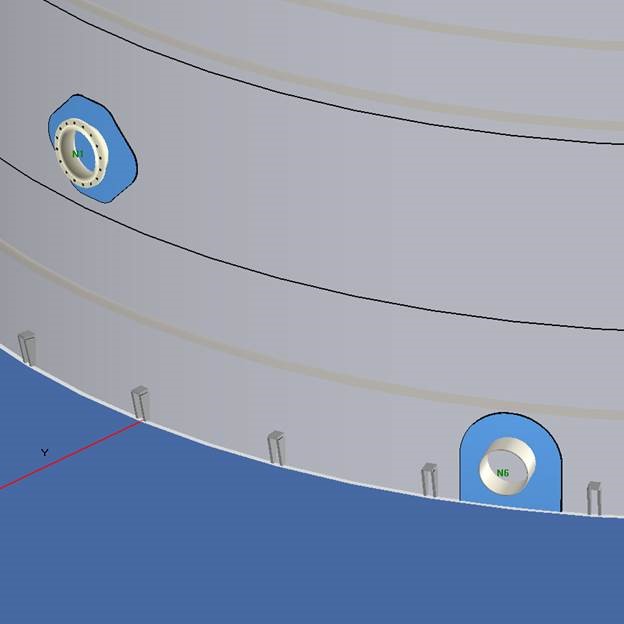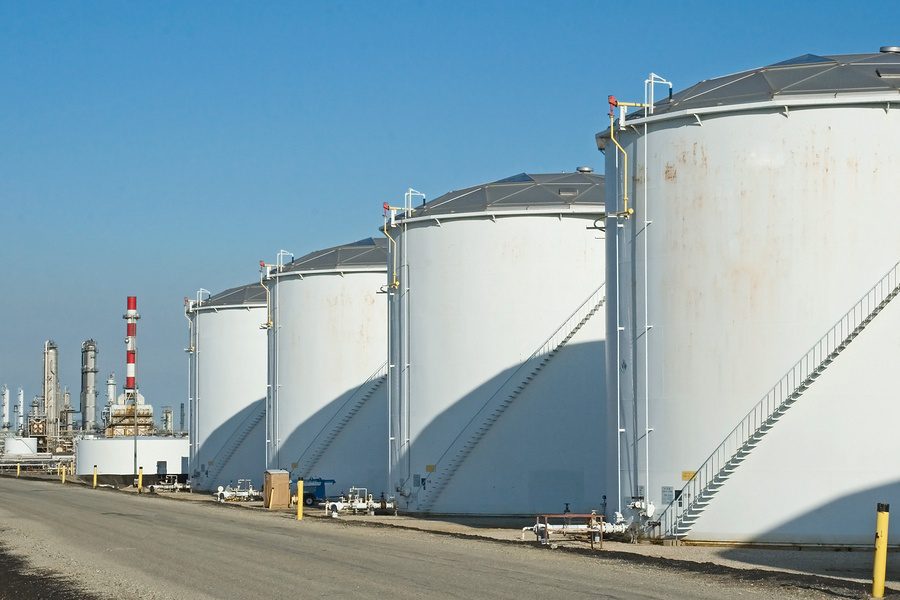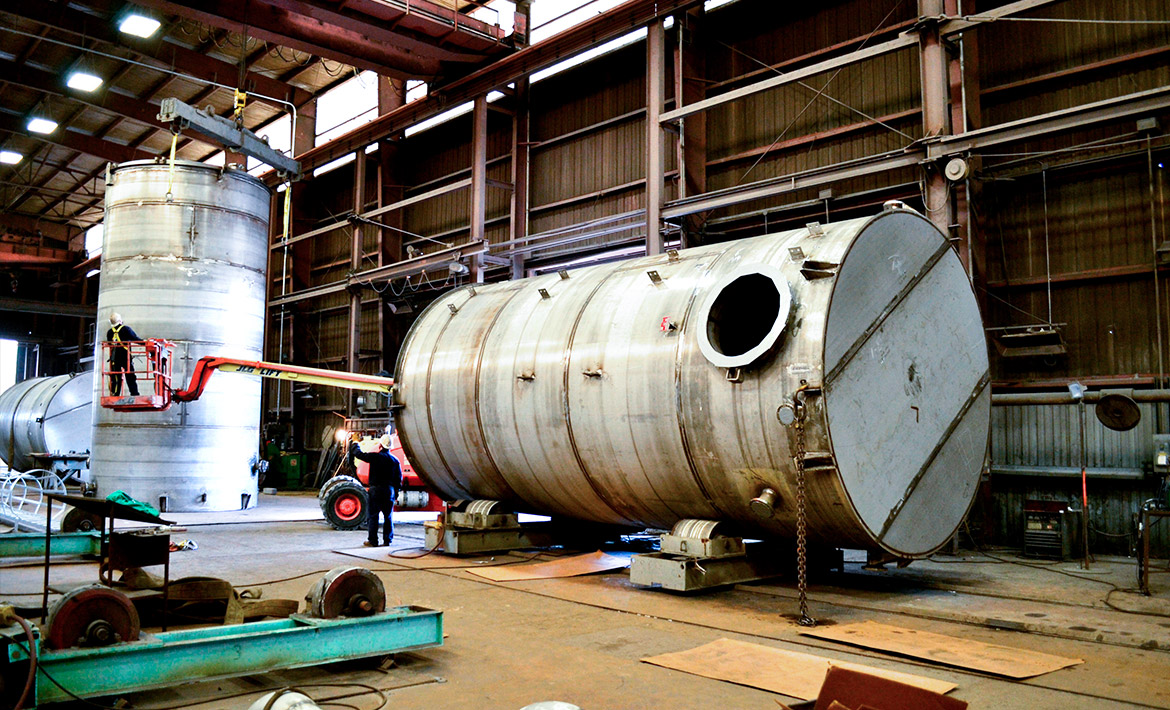How Welding Inspection Functions: A Comprehensive Overview for Professionals
Welding inspection plays an essential duty in making certain the security and reliability of bonded frameworks. It includes an organized method that consists of both visual assessment and advanced screening methods. Experts should acquaint themselves with key criteria and regulations regulating the sector. Comprehending the common defects that can emerge during welding is vital. This overview will explore these components thoroughly, supplying understandings right into the procedures that promote quality and stability in welding.
Comprehending the Importance of Welding Evaluation
While numerous may ignore the importance of welding examination, it plays an important duty in making certain the stability and safety and security of bonded frameworks. Reliable welding assessment recognizes prospective issues and defects that can compromise structural toughness and cause devastating failures. The inspection procedure encompasses various techniques, such as visual assessments, ultrasonic testing, and radiographic analyses, each adding to the general assessment of weld quality.
Along with safeguarding the structural stability, welding inspection assures compliance with sector criteria and client specs. By guaranteeing that welds satisfy required characteristics and resistances, assessments assist maintain the integrity and durability of parts in various applications, from building to aerospace. A rigorous examination process cultivates a culture of quality and responsibility among suppliers and welders. Inevitably, welding inspection is not just a procedural action; it is a critical method that underpins the safety and security and efficiency of crafted systems throughout diverse sectors.
Key Requirements and Rules in Welding Examination
The structure of efficient welding inspection rests on adherence to established laws and standards. Various companies, such as the American Welding Society (AWS) and the American National Specification Institute (ANSI), established forth guidelines that guarantee high quality and safety in welding practices. Key standards, such as AWS D1.1 for structural welding and ASME Area IX for pressure vessels, provide extensive standards for welding assessments, credentials, and treatments. Regulative structures, consisting of those from the Occupational Safety And Security and Health And Wellness Management (OSHA), required security methods and worker defenses in welding environments. Conformity with these criteria is important for accomplishing consistent weld top quality and lessening the threat of failures. Furthermore, worldwide standards like ISO 3834 additionally boost international consistency in welding inspection practices. Specialists have to remain informed regarding these policies to assure that their examination methods align with industry assumptions and lawful demands, consequently securing both personnel and structural honesty.
Initial Prep Work and Aesthetic Evaluation Techniques

Reliable welding examination starts with a detailed pre-inspection list that guarantees all essential problems are met prior to the actual evaluation occurs. Following this prep work, aesthetic problem recognition plays a vital duty in assessing weld top quality, allowing examiners to detect issues such as fractures or improper combination. With each other, these techniques develop the foundation for a successful welding assessment procedure.
Pre-Inspection Checklist
Before starting any kind of welding evaluation, a detailed pre-inspection checklist is necessary to assure that all necessary preparations are completed and that visual assessment strategies are properly employed. Crucial element of this checklist include confirming the welding procedure specification (WPS), seeing to it all devices is adjusted and in excellent functioning problem, and validating that the inspector possesses the required certifications. Furthermore, it is crucial to assess any kind of previous examination records and to examine the workplace for safety and security threats. The assessor needs to likewise confirm that all appropriate paperwork, such as material certificates and inspection records, is conveniently offered. Finishing this checklist assists to establish a strong structure for a successful evaluation procedure, boosting the integrity of the outcomes acquired.
Visual Issue Recognition
A successful visual defect recognition process begins with careful first prep work and the application of well established visual assessment strategies. Inspectors must assure that the welding location is well-lit and tidy, as adequate presence is vital for detecting defects. An extensive examination of the weld joint's surface enables for the recognition of discontinuities, such as fractures, damages, or porosity. Inspectors commonly utilize tools like amplifying glasses or mirrors to boost their sight of hard-to-reach locations. Furthermore, they should be acquainted with the certain welding requirements and standards relevant to the task. By adhering to these approaches, assessors can effectively recognize potential problems, protecting the honesty of the weld and conformity with sector criteria.
Non-Destructive Testing Methods: An Overview
Non-destructive screening (NDT) methods play a vital function in the welding assessment procedure by ensuring the stability and dependability of bonded structures without causing any kind of damage (API 650 Welding Inspection). These methods allow examiners to examine the top quality of welds while protecting the components being checked out. Typical NDT approaches include ultrasonic testing, radiographic screening, magnetic fragment screening, and dye penetrant testing, each offering one-of-a-kind advantages
Ultrasonic testing utilizes high-frequency acoustic waves to find inner defects, while radiographic screening utilizes X-rays or gamma rays to imagine the internal structure of welds. Magnetic particle testing exposes surface area and near-surface defects by applying a magnetic area and iron bits to the weld area. Dye penetrant screening highlights surface-breaking imperfections via the application of a tinted color. With each other, these NDT approaches offer critical understandings into weld high quality, allowing specialists to make informed choices concerning safety and conformity in welding applications.
Common Flaws and Their Effects
Determining usual flaws in welded joints is vital for maintaining structural stability and check this site out security. Various issues can arise throughout the welding process, each lugging potential implications for the total performance of the structure. Porosity, identified by little gas pockets within the weld, can damage the joint and endanger its load-bearing ability. Cracks may develop because of thermal stress and anxiety or incorrect air conditioning, causing prospective failing under tension. Incomplete combination takes place when the weld steel does not completely bond with the base material, resulting in weak joints that might not withstand desired loads. Undercutting, where the base steel is deteriorated, can additionally decrease the effective cross-section of the weld. Furthermore, extreme reinforcement can create anxiety concentrations that might bring about failure. Identifying these problems quickly enables restorative steps, ensuring the longevity and dependability of bonded frameworks in crucial applications.
Devices and Tools Utilized in Welding Examination
Efficient welding inspection relies upon a variety of specialized devices and equipment to ensure the top quality and honesty of bonded joints. Important instruments consist of visual evaluation tools, such as magnifying borescopes and glasses, which allow assessors to closely take a look at welds for surface area defects. Non-destructive testing (NDT) approaches, such as ultrasonic screening, radiographic screening, and magnetic fragment screening, are basic for recognizing inner defects without damaging the product.
Dimension tools, consisting of calipers and weld evaluates, assist determine and assess measurements compliance with specifications. Additionally, hardness testers assess the mechanical buildings of welded joints. Individual safety tools (PPE) is additionally imperative, protecting the security of assessors while working in potentially hazardous environments (API 650 Welding Inspection). Each tool offers a details function, collectively boosting the performance of welding assessment and adding to the integrity of completed jobs
Frequently Asked Questions
What Qualifications Are Required to End Up Being a Welding Examiner?
To become a welding examiner, people normally require appropriate certifications, such as AWS CWI or CSWIP, together with experience in welding procedures, engineering concepts, and expertise of examination methods, safety and security standards, and suitable codes.
Just How Often Should Welding Inspections Be Conducted?
Welding assessments must be carried out routinely, ideally at various task redirected here phases, including pre-weld, during-weld, and post-weld. Regularity may likewise rely on market requirements, job requirements, and the intricacy of the welds included.
Can Welding Defects Be Fixed After Examination?

Yes, welding flaws can often be fixed after assessment. Depending on the intensity and kind of flaw, suitable techniques such as revamping or extra welding may be employed to restore structural honesty and safety and security compliance.
What Industries Require Regular Welding Evaluations?

Various markets, including building, production, aerospace, and automobile, need regular welding inspections - API 650 Welding Inspection. These inspections guarantee adherence to safety requirements and quality assurance, lessening dangers linked with structural honesty and operational efficiency in bonded elements
Exactly how Do I Select a Welding Examination Service?
To choose a welding evaluation service, one need to consider credentials, experience, qualifications, and market reputation. Additionally, reviewing customer evaluations and assuring the solution satisfies appropriate requirements can assist guarantee high quality inspections and trustworthy results.

While several might ignore the relevance of welding assessment, it plays an important role in ensuring the honesty and security of welded frameworks. Key standards, such as AWS D1.1 for structural welding and ASME Section IX for stress vessels, supply extensive standards for welding certifications, inspections, and treatments. Effective welding examination begins with an extensive pre-inspection checklist that assures all find more info essential conditions are met prior to the real assessment takes place. Before commencing any welding examination, a complete pre-inspection checklist is necessary to ensure that all needed preparations are completed and that visual evaluation strategies are efficiently employed. Non-destructive testing (NDT) approaches play an important duty in the welding inspection process by making certain the integrity and integrity of welded frameworks without creating any type of damages.